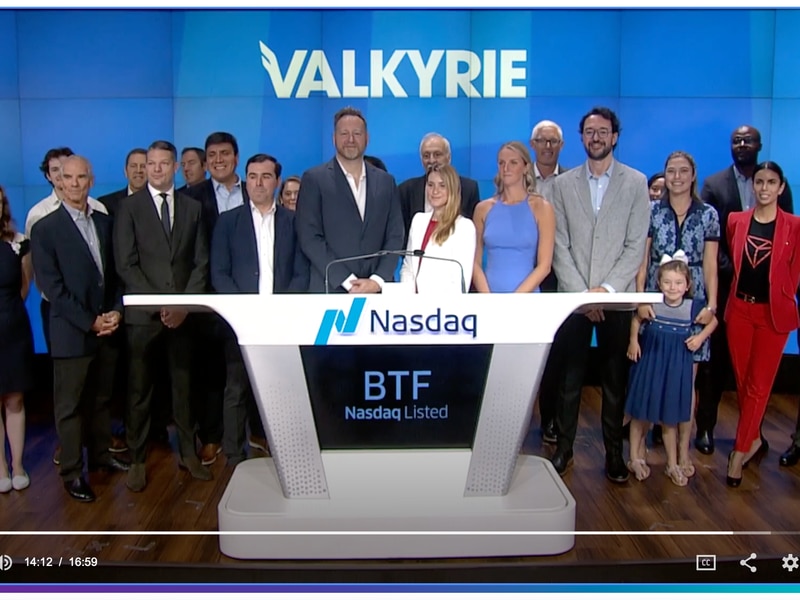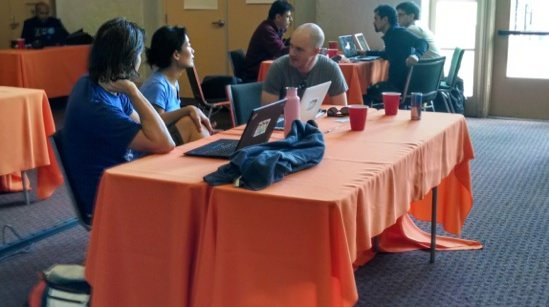Ready Layer One: Base Layer Protocols Team Up for Virtual Developer Event
Ready Layer One: Base Layer Protocols Team for Virtual Developer Event
Togetherness is the message of Ready Layer One, a conference being planned for early May by the Web3 Foundation, Near, Cosmos, Tezos, Protocol Labs and Polkadot, all entities involved in building new blockchains designed to serve as the primary layer for distributed applications. Other blockchain projects may yet join.
The website describes the virtual gathering as follows: “Think of it as the intersection between a hackathon, a conference, a MasterClass seminar and a vaguely anarchist festival for developers and builders of a decentralized web.”
Ready Layer One reflects a big-tent approach to blockchain gatherings, not unlike CoinDesk’s own Consensus, which is also going virtual this year. While most gatherings tend to be protocol-specific, Ready Layer One is taking a more agnostic approach.
The event is scheduled for May 4-6 and represents a combined effort to galvanize those already in the ecosystem to work on some of their shared problems together. CoinDesk recently reported on the idea of blockchain interoperability as a vision in which there will be “one network, many chains.”
“We think of blockchain technology as a public good to build a more open and innovative world, but it’s unclear yet what technologies and set of trade-offs really works,” Illia Polosukhin, a co-founder of NEAR, told CoinDesk.
Featuring two of the best-known interoperability projects, Cosmos and Polkadot, Ready Layer One reflects a real-world example of at least part of the industry betting that a rising tide will lift all boats.
Chris Ghent, from the marketing team at TQ, an organization working to advance the Tezos blockchain, told CoinDesk, “We don’t need people to commit to one thing but to commit to blockchains [in general].”
The target audience for the event is developers, and there’s no cost to attend. Participants just need to demonstrate some skin in the game either by showing they’ve already done blockchain work or by participating in the testnets, hackathons, staking demonstrations and other open calls issued by the organizing protocols.
Ready Layer One’s organizers are trying to make the event as accessible as possible, so it will run on an extended schedule that should work fairly easily for people in the U.S. and Europe, though it might be a stretch for Asian participation. A 24-hour schedule just proved to be a bit more than they could handle operationally, the organizers said.
Also, the project will be run over a fairly new platform called Hopin, designed to imitate as much from real conferences as possible given the constraints of virtuality. In other words, it has features for “mainstage talks,” smaller interactive workshops and also networking.
The networking aspect relies on a Chatroulette-like feature where users will be randomly paired with another attendee in the networking pool. They can chat, exchange contact info and switch conversations whenever they feel like it. It eliminates the uncertainty of approaching strangers and the frustration of breaking into crowds around well-known people.
Hands on
“The founding projects, they all have stuff that’s ready to go,” Zaki Manian, co-founder of a Cosmos-oriented staking company called Iqlusion told CoinDesk. “You can build with it and play with it right now.”
TQ’s Ghent sounded a similar note, saying the pitch really is to draw in what he called “qualified tinkerers.”
“If I want to build something on Cosmos, and Cosmos dies, can I build a similar thing on NEAR?” Manian said by way of example. The answer, he thinks, is yes, and if Ready Layer One can show that to developers, then those devs will see less risk in choosing to build on any of the Layer 1 networks.
There’s also going to be an element of dealing with cross-chain challenges, according to Ashely Tyson, who is helping to organize the event on behalf of the Near protocol.
“There are a few topics that cross all of the protocols that we’re going to be compiling themed workshops and mainstage talks around,” Tyson said. Before the world shut down, Near had been organizing small gatherings to discuss some of these issues, such as standards for using existing open source technology (like WebAssembly) in a blockchain context and efficiently keeping interoperability in mind.
There will be some updates on these topics and also calls for developers to get involved in research and development that should benefit all the projects.
Blockchains have potential but no one disputes that it’s not yet fully realized.
Poloshkin spoke to frustrations that the technology is not really ready to help in the current crisis. “The technologies we are all working on have an ability to help and change things in the coming months and years. But we are still far from the state where it can be used by the mass market,” he said.
Weird year
Blockchains may be virtual but meeting up digitally at scale is new in this space.
Both Manian and Ghent noted that much of the industry’s calendar has been defined by conferences and physical gatherings, and no one knows when the next big crypto event will actually happen IRL. It makes for a “strange time,” as Ghent put it.
“Given all things COVID, we’re actually looking to digitize a whole lot of our go-to-market [strategy],” Ghent said. “Not just in the COVID world but knowing that a lot of devs are digital-forward and online.”
That said, doing a virtual conference is a whole new endeavor and one without well-established norms, a point Manian is well aware of.
“I think for a lot of teams it’s a lot less scary to try to do this with a group of protocols, rather than to try to do it on your own,” Manian said.
Disclosure Read More
The leader in blockchain news, CoinDesk is a media outlet that strives for the highest journalistic standards and abides by a strict set of editorial policies. CoinDesk is an independent operating subsidiary of Digital Currency Group, which invests in cryptocurrencies and blockchain startups.









